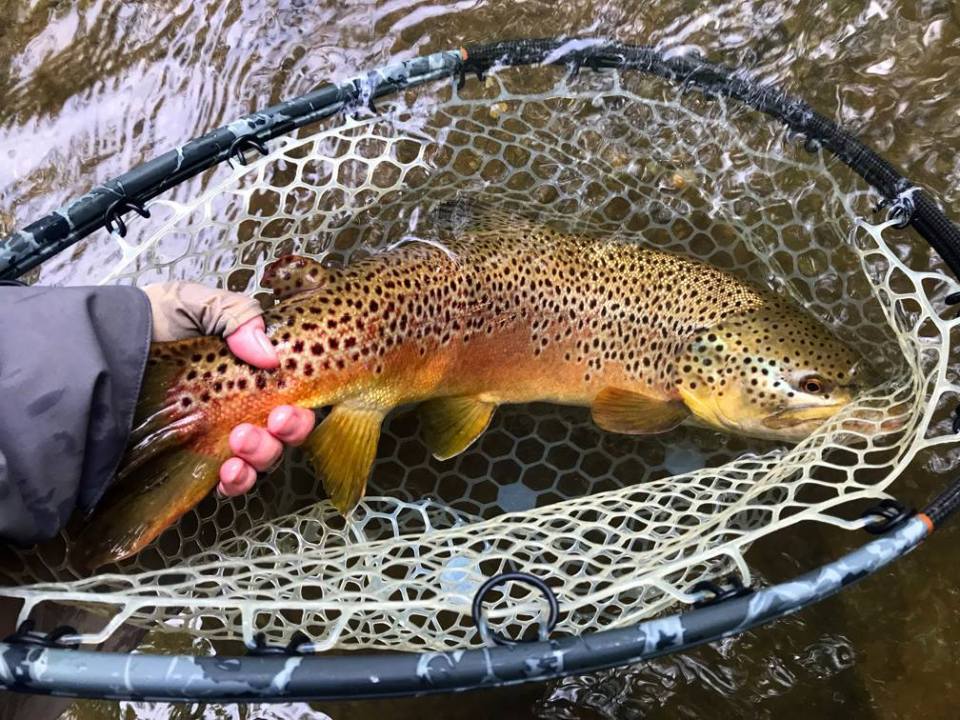Our goal is to have 1,000-1,500 signatures to present to the Pennsylvania Fish and Boat Commission in January of 2021.
Sixty-one years ago, Trout Unlimited – a renowned conservation organization – started. The principle that guided it is the principle that if we “take care of the fish, then the fishing will take care of itself.” That principle is grounded in science. Paraphrasing Dr. Casey E. Westell, Jr., the organization’s first president, one of the most important objectives is developing programs and recommendations based on the very best information and thinking available. In all matters of trout management, we want to know that we are substantially correct, both morally and biologically.
Would you, as a Pennsylvania trout angler, like to see our trout and waters achieve their greatest potential?
Would you like to have the opportunity to pursue large wild brown trout year-round?
Would you like to see our valley floor cold-water streams and our larger streams, which are now considered warm-water bass streams, become trout streams during the colder months of the year?
If so, then read on …

Brown trout have a greater diversity of food and feeding opportunities in the valley floor streams. These streams generally are found away from the streams inhabited by native Brook trout. Eggs and last year’s young of the year (YOY) are left behind. Sexually mature brown trout drop back to compete for food with smallmouth bass and other warm-water species growing larger and very fertile. They regain the energy lost from the rigors of running and spawning in cold water streams. This behavior has been identified and witnessed in streams that have not been stocked.
Pennsylvania received two strains of Brown trout, one from Germany (Bach Forelle, which means Brook trout), and the other from Scotland (a migratory strain of Loch Leven). For seventy years, the Federal fish hatcheries dispersed the fingerlings as plantings. Today, Brown trout in this state continue to demonstrate the behavior of leaving the cold-water natal streams for more fertile pastures downstream. This behavior is most prominent where stocking is non-existent on these nursery waters.
As mentioned above, Pennsylvania introduced two strains of Brown trout. The critical difference between these two strains was the characteristic of movement. Brown trout that leave the thermal protection of the cold-water tributary stream for downstream feeding opportunities demonstrate the Loch Leven strain’s characteristic.
Why is this important? This movement is an example of the least altered genetic diversity. Conversely, with each generation propagated in captivity, genetic diversity diminishes. These trout in Pennsylvania’s wilds demonstrate early planting characteristics and are the subject of our proposed study. They can grow larger and more fecund and deserve, for the first time, a seat at the management table in Pennsylvania.
In theory, stocking increases the stress due to a sudden and unnatural population density on nursery waters. This results in an adaptation of the wild trout. Our smaller, cooler waters should function as nursery streams with more room and less feeding competition for survival. Stocking exacerbates this competitive stress, so the trout adapt by becoming smaller and fertile at an earlier age. We are creating an imbalance between fish and food, resulting in stress and the stunting of one of the most adaptable species. Make sense?
Instead of being a state that historically stocks hatchery fish over wild, naturally producing trout, Pennsylvania could take the lead in trout fisheries management.
We will be proposing the following study to the Pennsylvania Fish and Boat Commission:
- Select a cold-water stocked stream that is considered a nursery stream
- Do a baseline survey noting young of the year and age class structure on the selected stocked stream
- Stop further stocking
- Survey twice annually, pre-spawn and post-spawn, noting age class and size.
- Include genetic sampling for identification and to distinguish between migratory (movers) and other resident Brown trout
Today, these trout populations’ exposure through social media presents a threat to their survival and an urgent need for protection.
A well-defined, achievable request of PFBC is linked to the Extended Season regulation. Extended Season: Stocked trout waters and all waters downstream of stocked trout waters. From January 1 through February 28 and September 7 through December 31, the harvest is 3 combined species over 7 inches. There is little discernable science behind the minimum size of 7 inches.
If this regulation is changed, it should receive minimal pushback from anglers. The Extended Season of September 7 to the statewide closure of March covers the spawn and post-spawn. This fact is critical to our wild trout.
Changing to 3 combined species under 14 inches would protect spawning trout and migratory trout in their hunt for safe food in all downstream waters during the post-spawn period. This regulation would cover all waters without being named to avoid exploitation.
The Keystone Select Waters program was an initiative to help the PFBC increase license sales and revenue. The Special Regulation Keystone Waters program recognizes the value that larger trout represent from a revenue perspective.
The proposed change to 3 per day under 14 inches combines practical and effective conservation-minded management based on science. It promotes a more fiscal, long-term management strategy.
